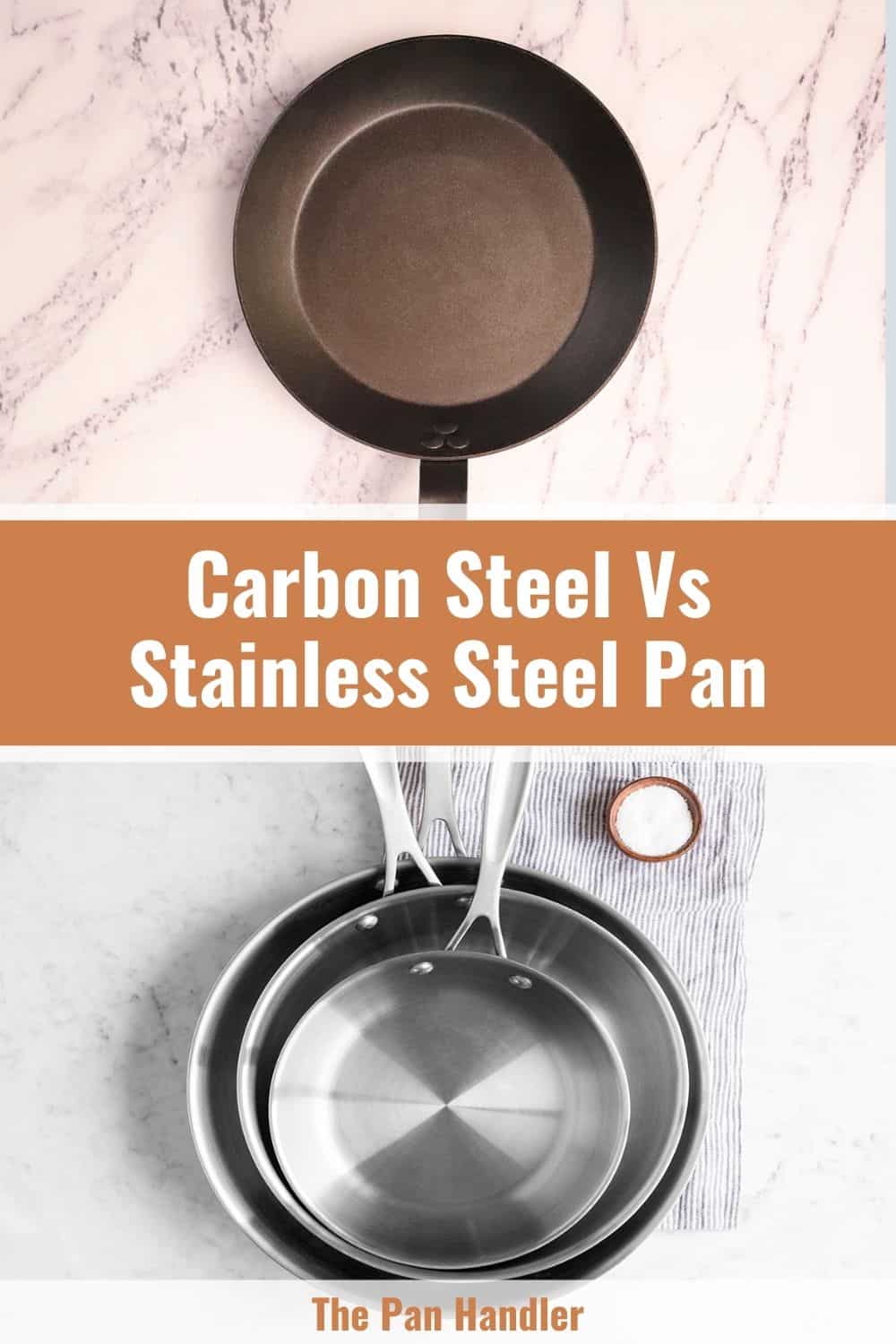Carbon and stainless steel pans are popular cookware in most kitchens. Both are strong, durable, and very attractive. Even though they both contain iron and carbon, which makes them share some similarities, they also have their differences. You can read more information about them below.
What Are The Strengths and Weaknesses of Both Carbon Steel and Stainless Steel Pans?
Carbon Steel Pans
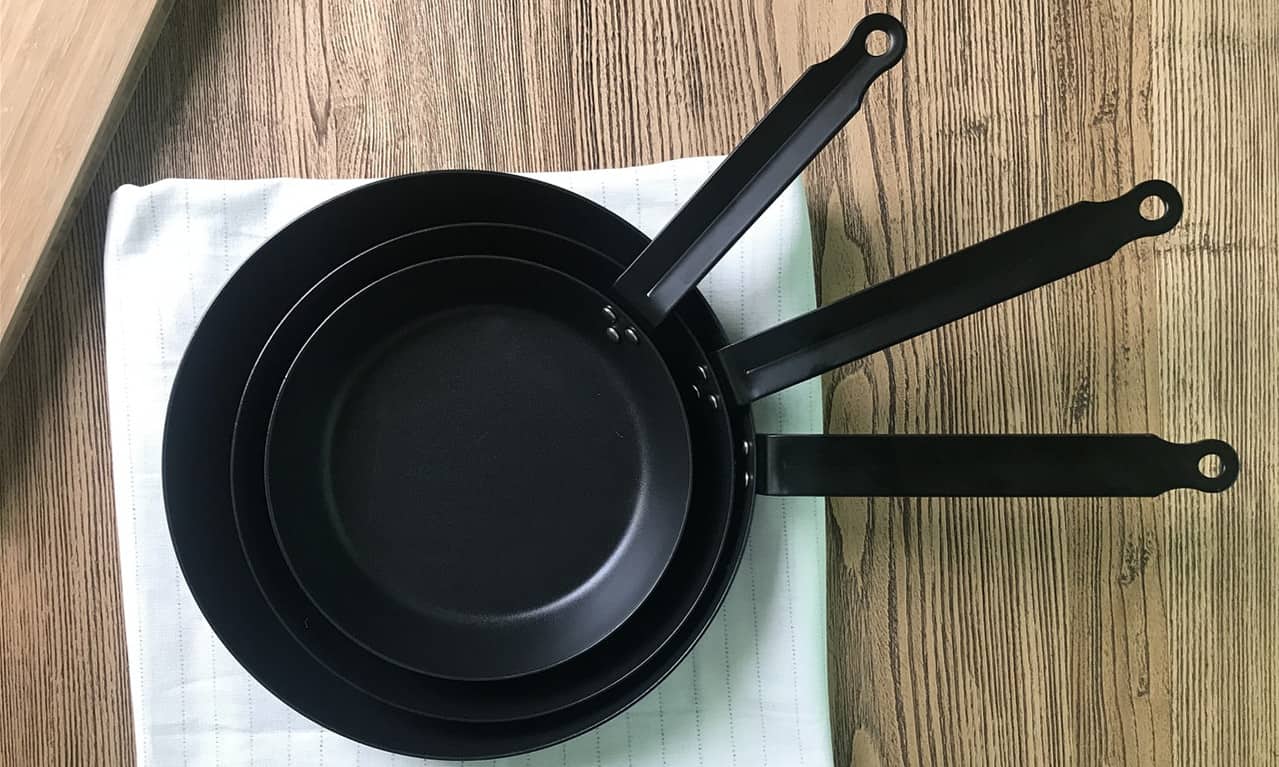
Carbon steel pans contain both iron and carbon, 99% and 1%, respectively. They are similar to cast iron pans but are thinner, lighter, and easier to handle. They are popular products in most kitchens because of their qualities and the rave reviews people share about them.
Strengths
They are very versatile as you can use them for cooking different types of foods. Whether you are grilling chicken or scrambling eggs, your food turns out well-cooked and evenly browned. They are safe for your health and work well with almost every cooking method as well.
They are durable with proper care. They don’t break easily and are non-stick. However, you have to season them regularly to maintain their non-stick features.
Weaknesses
However, even though carbon steel pans don’t break, they are prone to warping. This makes them sit unsteadily on your stovetop or gas cooktop. If you aren’t careful, your food might pour away. Besides, cooking acidic foods such as tomato sauce, vinegar, etc., in carbon steel pans destroys their non-stick properties.
Stainless Steel Pans
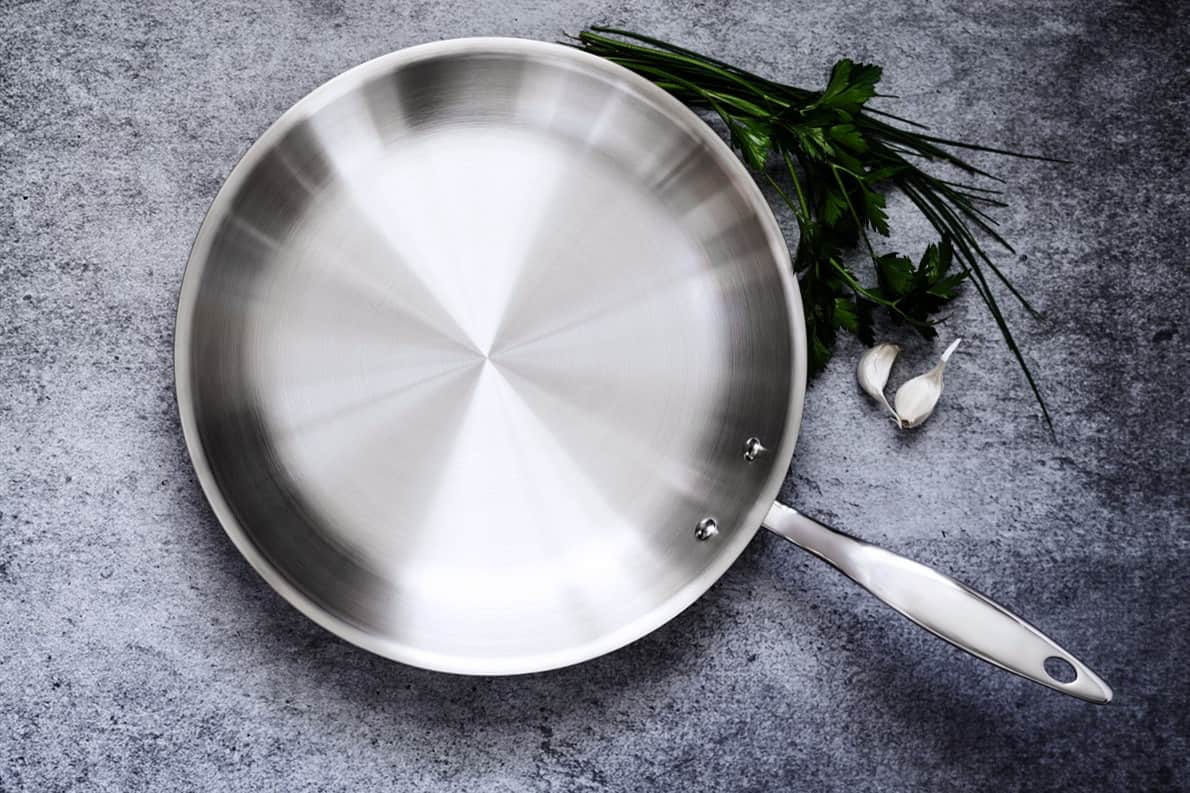
Stainless steel pans are made with an iron alloy that has chromium, carbon, nickel, etc. Chromium eliminates every instance of corrosion; that is why your stainless steel cookware doesn’t rust or change color. Nickel makes stainless steel pans stronger and maintains their polish.
Strengths
Stainless steel pans are good heat distributors. They distribute heat across their cooking surfaces evenly and quickly, especially if their core is made of copper. They are versatile. They are primarily used as all-purpose products in kitchens around the world and fit for every cooking method. Also, they work well on all cooktops, whether it’s induction or gas cooktops.
Weaknesses
However, stainless pans have their failings too. They are mostly not non-stick, so food sticks to them. You have to apply some oil on the cooking surfaces and preheat before cooking to prevent food from sticking to the characters.
If your stainless steel pans don’t contain copper or aluminum, they might not conduct heat as efficiently. For optimal heat conduction, consider pans with a copper or aluminum core, which can be a bit more expensive.
What Are The Similarities Between A Carbon Steel Pan And A Stainless Steel Pan?
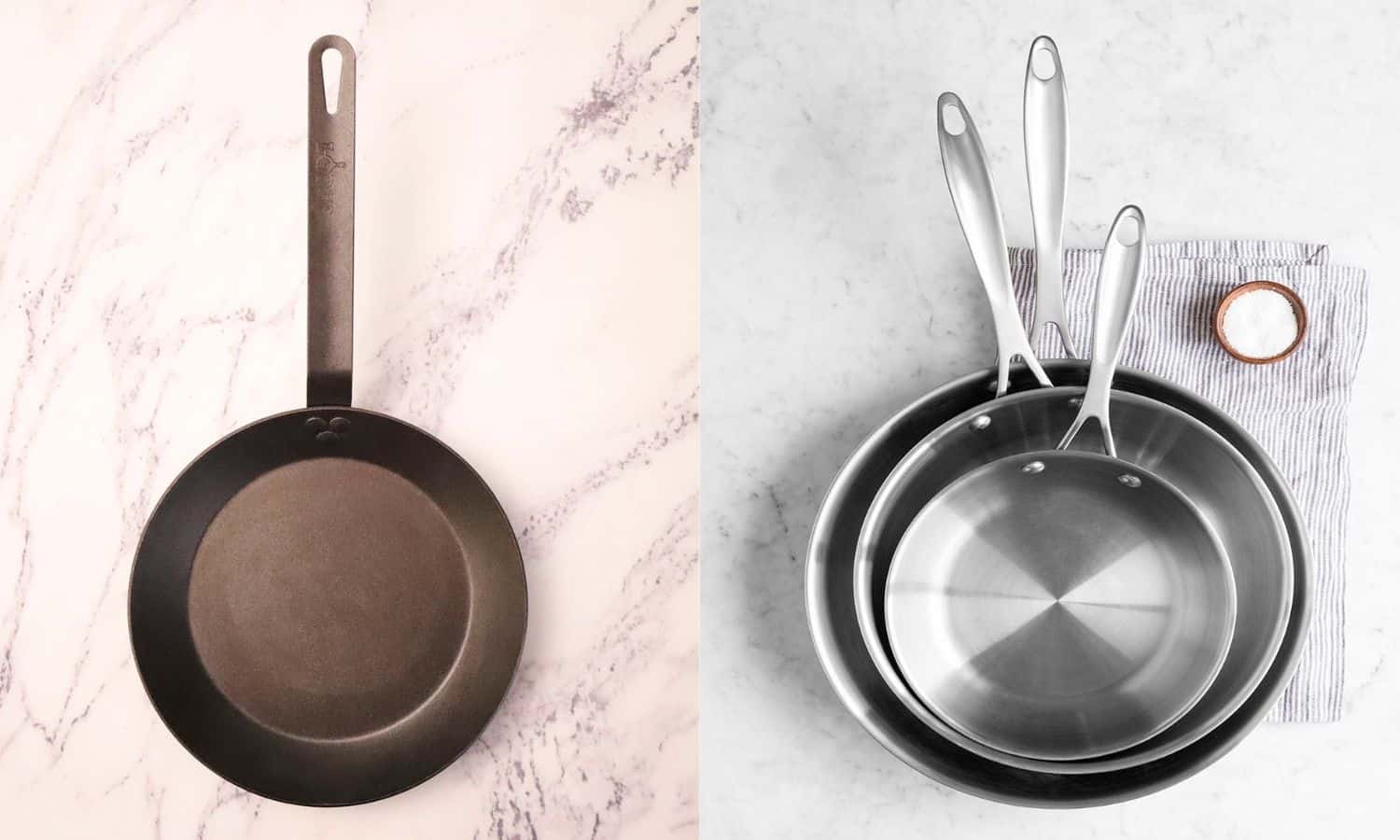
Durability
You can use them for a significant amount of time in your kitchen, as long as they are high quality and maintained adequately. They are timeless cookware in the kitchen. However, it would be good to check on the condition of the pans every five years and consider replacement, especially if they start getting warped or discolored.
Versatility
Furthermore, both pans are incredibly versatile. They work well with almost every cooking method: grilling, frying, roasting, boiling, etc. They can be used for cooking different types of recipes such as stews, braises, etc., and the foods turn out nice.
Compatibility with induction cooktops
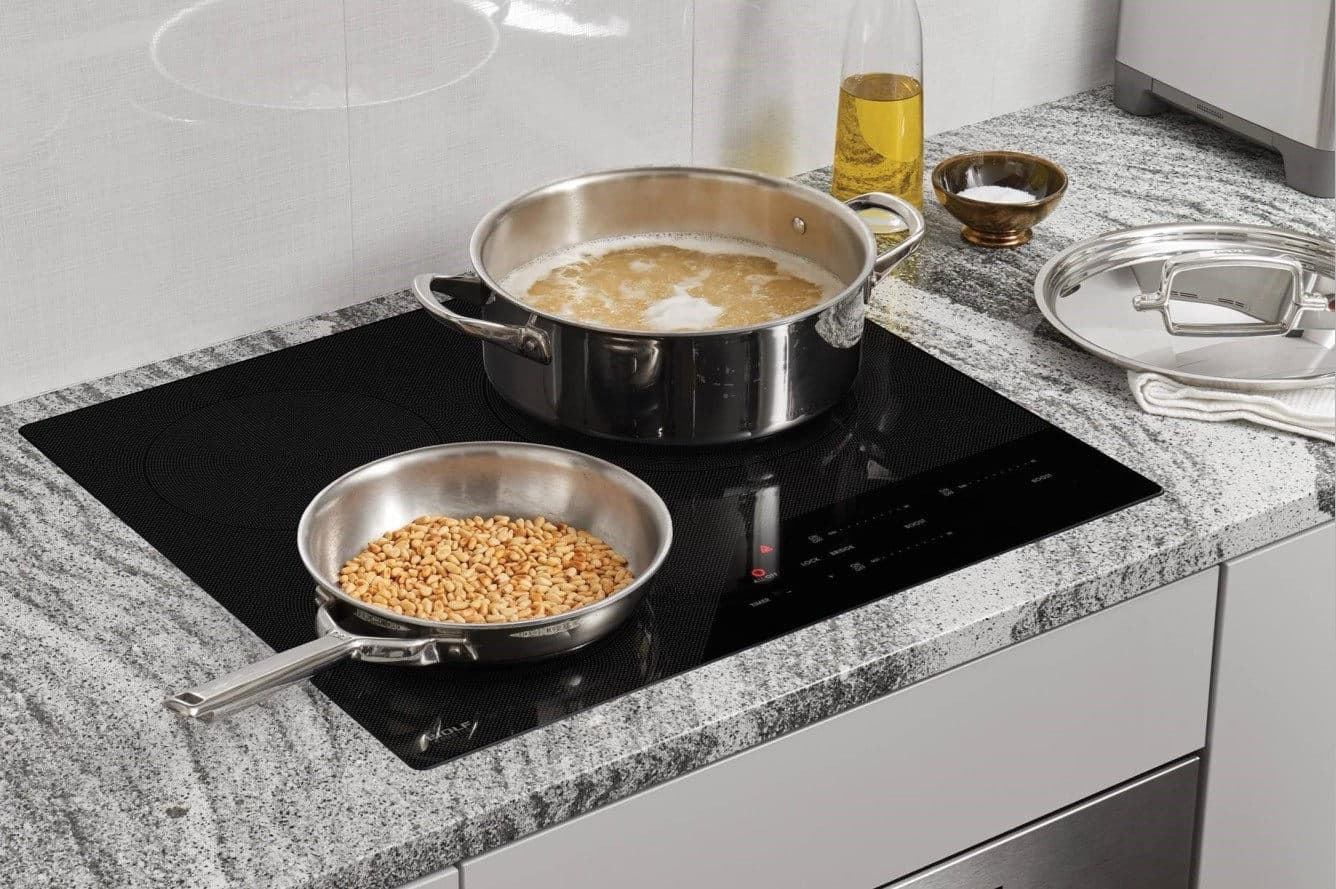
Also, both pans work well with induction cooktops as long as the stainless steel pan is magnetic. Induction cooking increases your cooking speed and is safe to use, especially if you have pets or kids. However, only cookware that contains magnetic properties can be used in induction cooking.
This is because induction cooktops generate heat through electromagnetism to cook your food. This means that there is always an electromagnetic reaction between your pan and the burner. As such, the burner won’t work if there is no pan on it.
Non-metal utensils
In addition, both pans work best with plastic, silicone, or wood utensils. Using metal utensils with carbon steel pans will break down the non-stick properties of the pan over time. Carbon steel pans usually have a fine coating on their cooking surfaces, and the sharp grooves of metal utensils can scratch off the fine coating.
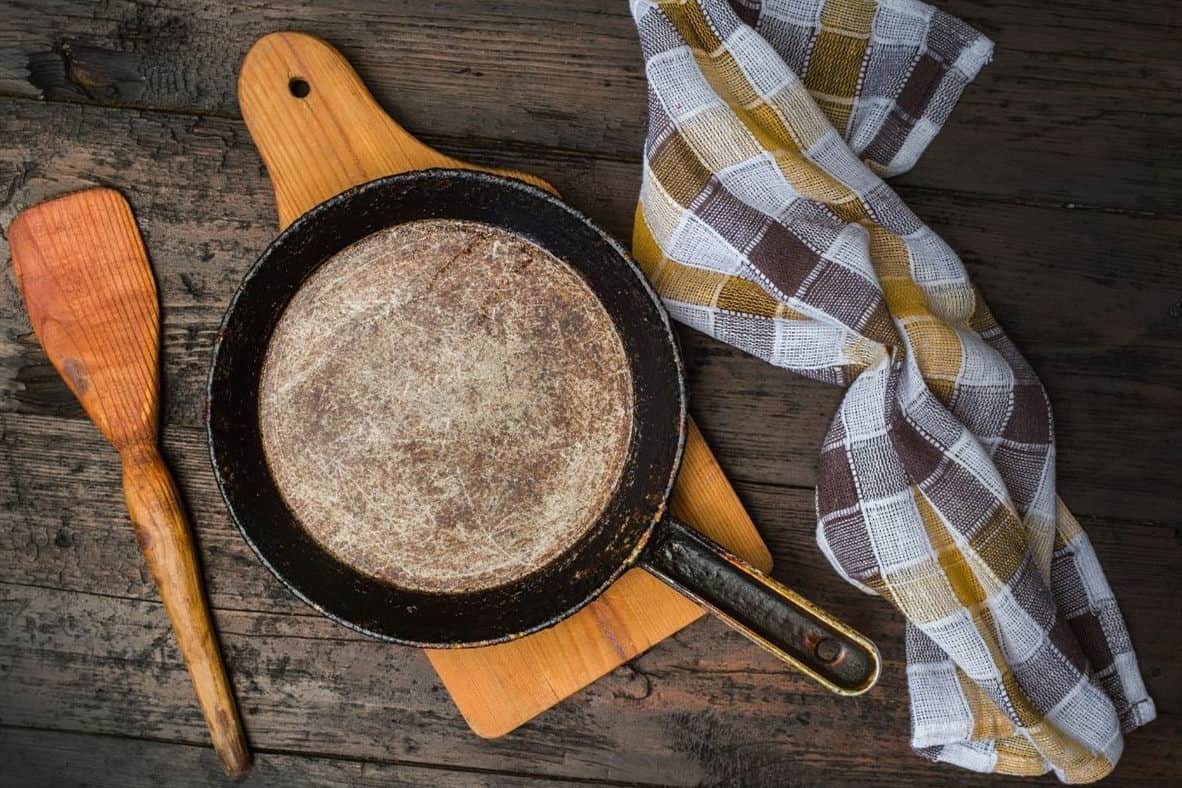
Stainless steel pans are more heavy-duty, but using metal utensils with them can scratch their cooking surfaces. Even though these scratches don’t affect their performance, they reduce the aesthetic value of your stainless steel pans. Avoid sharp utensils if you want to maintain the polished appearance of both pans.
Aesthetic value
Finally, both pans look elegant in your kitchen. They are beautifully designed, and placing them on your cooktops increases the aesthetic value of your kitchen. They both cohesively fit into your cookware collection. You should buy good-quality products when shopping for both pans so that they will continue to look like new all through the time you use them with proper maintenance.
What Are The Differences Between A Carbon Steel Pan And A Stainless Steel Pan?

Even though both pans have similar qualities, they aren’t the same. Some of their differences include :
Limited versatility
Even though both pans are used for multiple purposes in the kitchen, their versatility is limited. For instance, carbon steel reacts to acidic food ingredients such as vinegar, tomatoes, etc.
This reactivity causes discoloration of the pan and the leaching of metals into your food. Even though stainless steel pans don’t react with any ingredients, they aren’t versatile enough to cook delicate dishes perfectly as most aren’t non-stick.
Appearance
In addition, both pans aren’t the same in appearance. They are both beautifully designed and look bright and shiny, but carbon steel pans lose their luster over time if they aren’t seasoned regularly. They begin to tarnish before they get corrupted eventually. On the other hand, a stainless steel pan maintains its bright and shiny look even when it gets scratched.
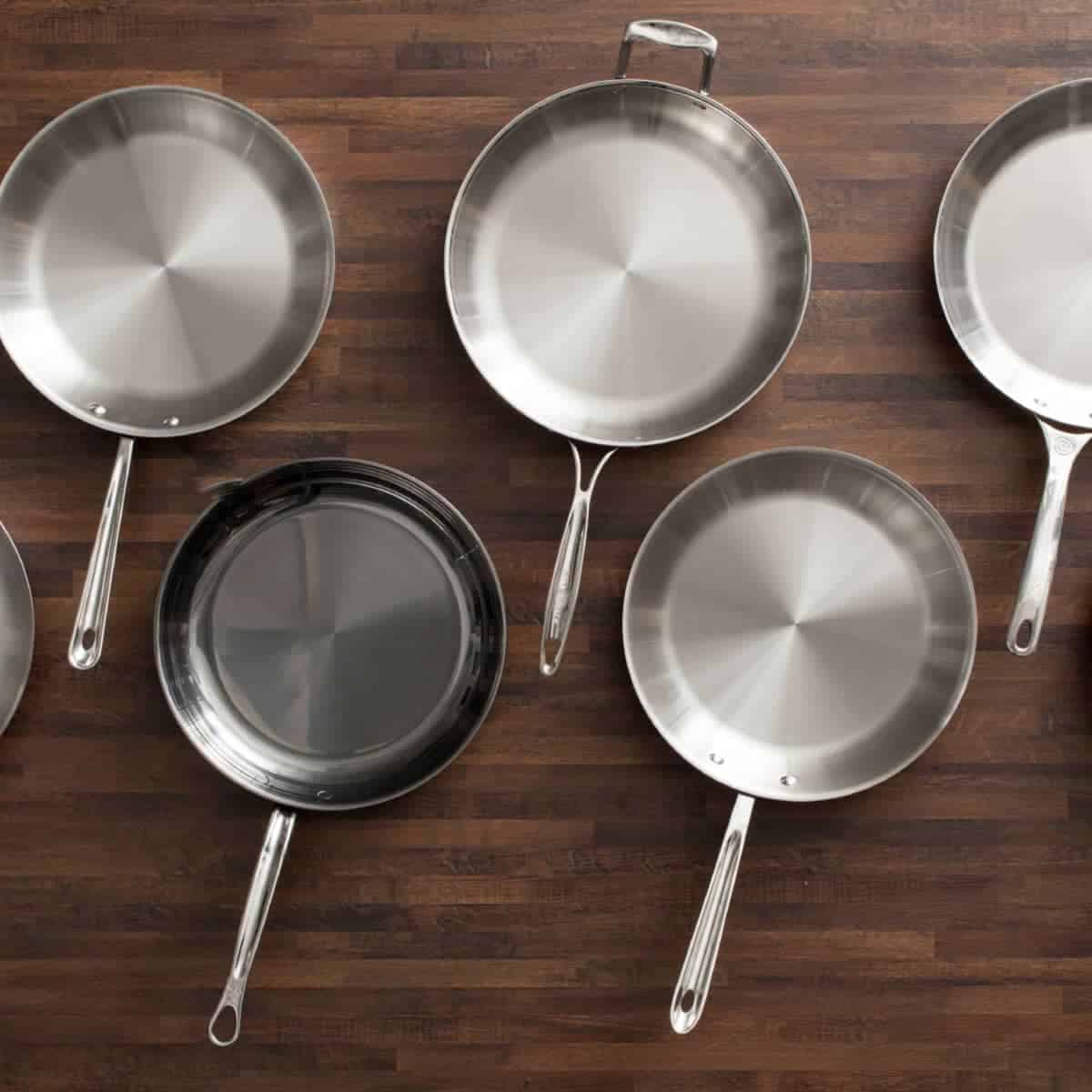
Corrosion
More so, carbon steel pans get corroded quickly compared to stainless steel pans. Both pans are made of iron, which oxidizes when exposed to the air and water. As such, it begins to rust over time.
However, stainless steel pans contain chromium which is more resistant to rust as it quickly attaches itself to oxygen and forms a protective layer on the pan. The chromium in carbon steel pans is insufficient. Therefore, they are more prone to corrosion.
Heat conductivity
When it comes to heat conductivity, carbon steel pans are excellent heat conductors. They heat your food quickly. They are also good at maintaining heat for some time, even after they have been brought down from the burner.
They are excellent options for those who want their food to heat up quickly. Conversely, stainless steel pans are naturally poor when it comes to heat conductivity. This is why most of them contain aluminum or copper to up their heat conductivity. Also, carbon steel pans tolerate more heat than stainless steel pans, even though both can withstand high-heat temperatures.
How To Properly Maintain Both Carbon Steel And Stainless Steel Pans
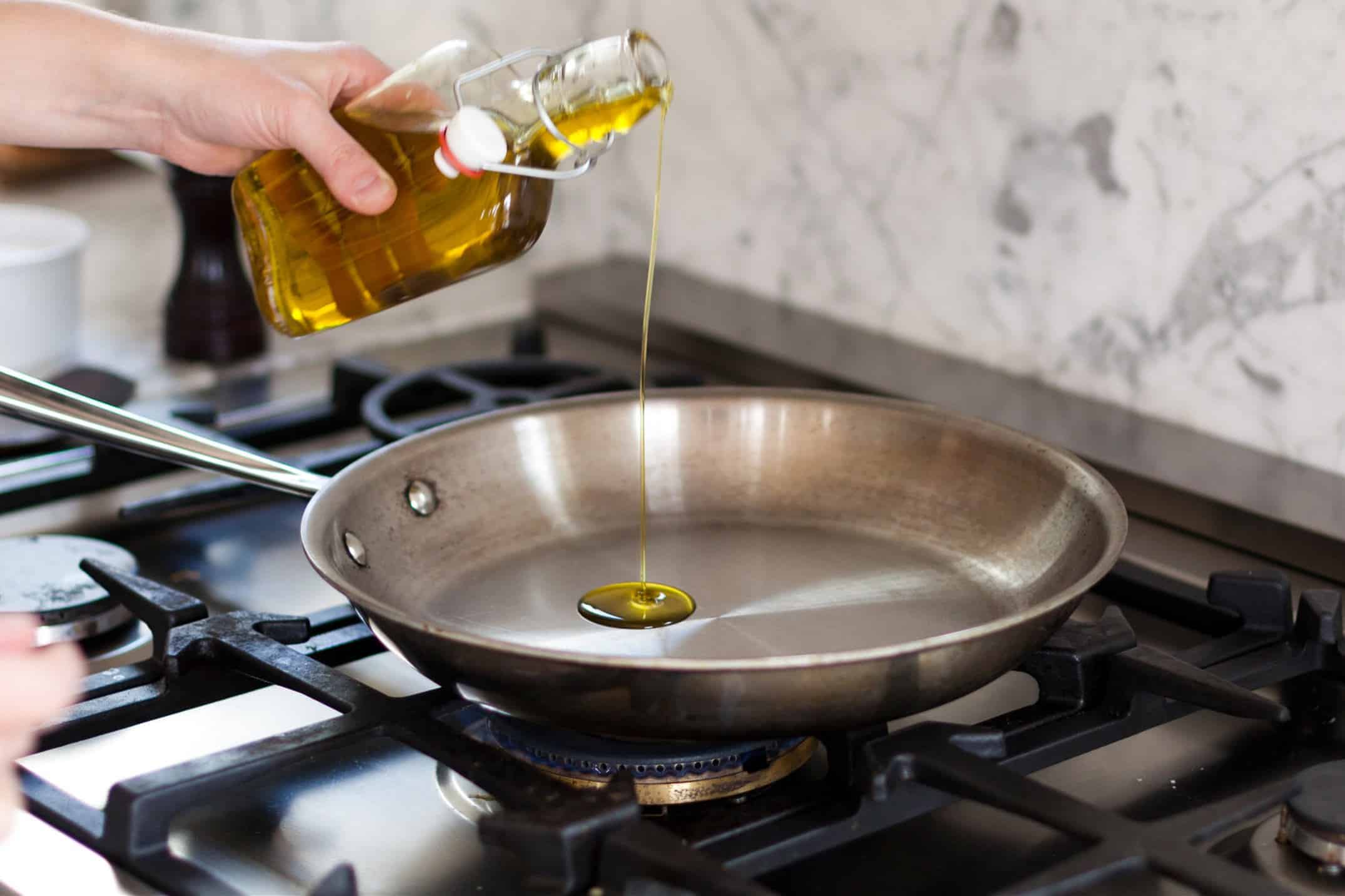
No matter which you choose between the two, both pans need to be properly maintained if you want them to function well. Here are some ways to care for them.
Season both pans regularly
Carbon steel pans need to be seasoned regularly to protect their non-stick properties and prevent discoloration. While stainless steel pans don’t need to be seasoned to maintain their appearances, seasoning them prepares them for cooking and stops food from sticking to the cooking surfaces.
Most stainless steel pans aren’t non-stick, except their cooking surfaces are coated with other non-stick metals. How often you season both pans are up to you, but you should do it often, especially when your food starts getting burnt.
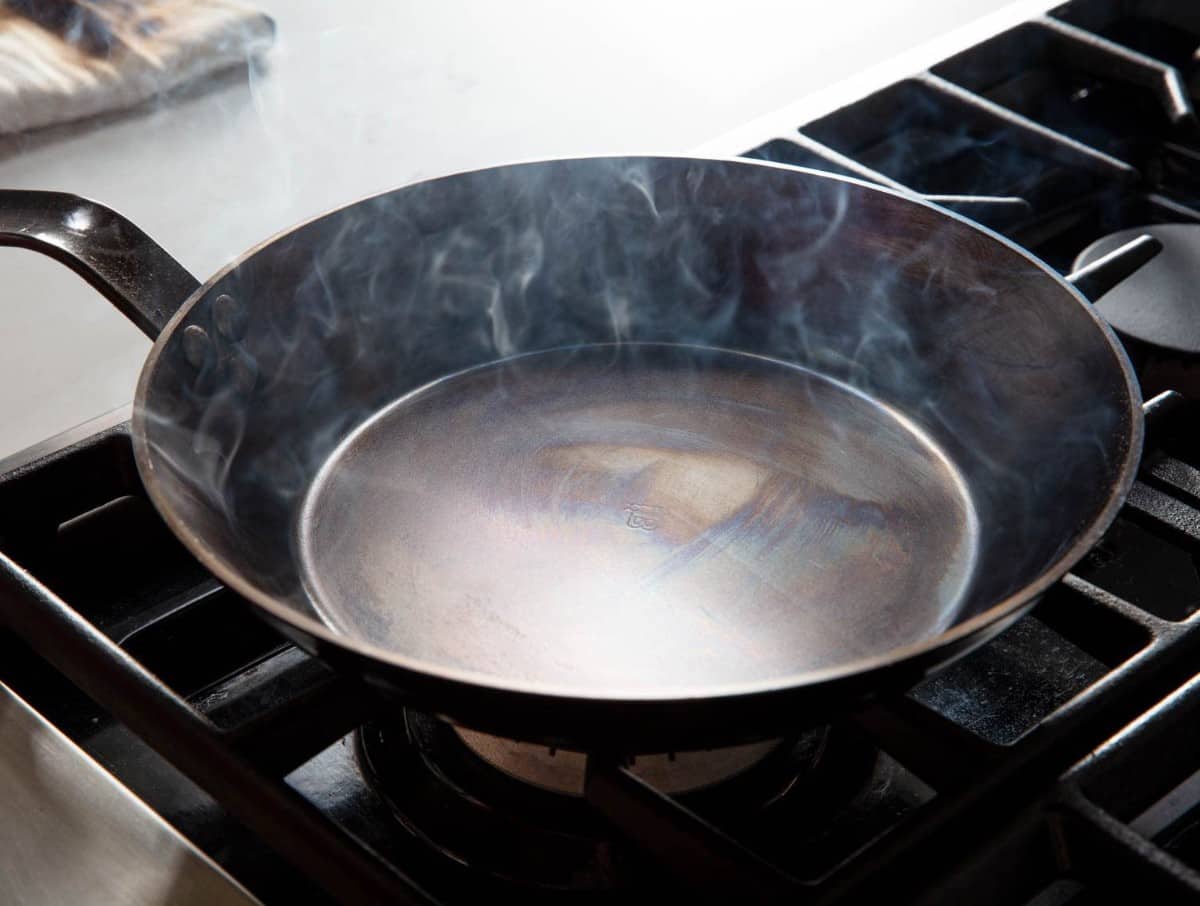
Avoid using abrasive soaps or scouring pads
Harsh soaps and abrasive scouring pads scratch off the pan’s non-stick properties and wash away the seasoning. Besides, carbon steel pans are easy to clean as food slips off quickly, especially when you season them often.
Even though stainless steel pans can have burnt food residues, abrasive scouring pads will lead to cuts and carves on their surfaces. There are other ways you can remove tough marks asides from using abrasive scouring pads. Besides, regular seasoning makes stainless steel pans easier to clean.
Keep lids and glass covers properly
If your carbon steel or stainless steel pan comes with a lid or glass cover, ensure you keep it properly. For instance, glass covers have no place in the oven, microwave or broiler. Typically, heat weakens glass, thereby making it softer and reducing the volume.
These changes are irreversible. Also, don’t strike the glass cover or hit it against another surface when cooking or serving food. If your lids are cracked or chipped, replace them immediately. Organize your cookware appropriately.
Read the manual
You must read the manuals that come with the pans. Usually, the material the kitchenware is made with determines how you will care for them. The manufacturer usually provides detailed instructions on how to care for your pans. You should follow these instructions if you want your pans to operate at peak performance.
Summary
When choosing between the two pans, you must consider your cooktop and preferences. If you want a lighter and naturally non-stick pan, you should go for a carbon steel pan; if you want a pan that doesn’t react to acidic foods, consider buying a stainless steel pan. However, what preserves both pans is proper to use and maintain.
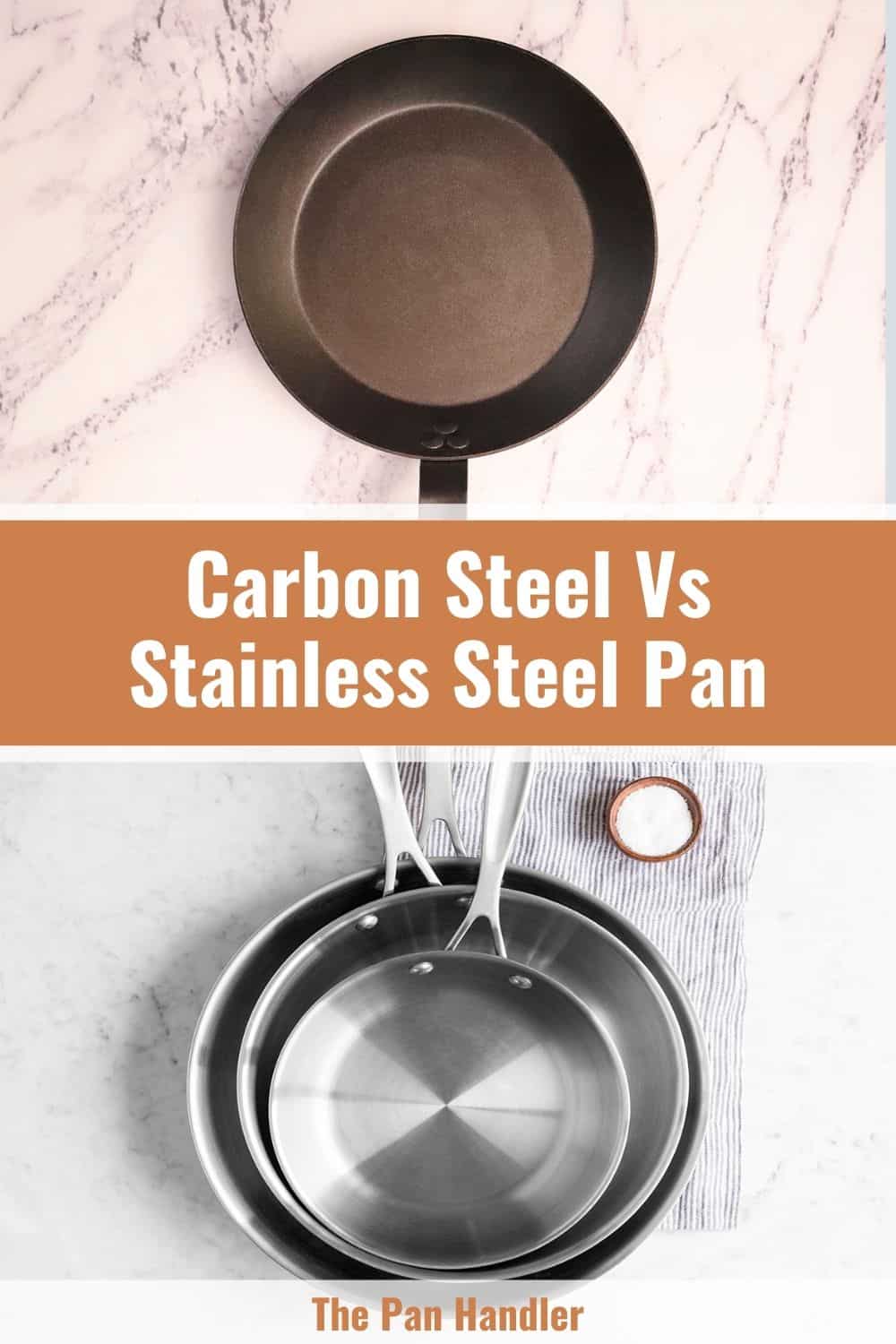

Michael Johnson is the founder of Pan Mastery, Inspired by his blacksmith grandfather’s legacy has a deep appreciation for hand-crafted pots and pans, he provides invaluable guides, reviews, and recipes to enhance your culinary journey.

